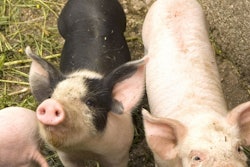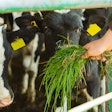
Secretary of Agriculture Tom Vilsack tells Congress his department has lost more than 5,000 workers in 5 years
Even the U.S. government is not immune to the staffing shortages plaguing most industries across the economy. This week, Secretary of Agriculture Tom Vilsack told a House Appropriations Subcommittee that it would see a request for additional staffing at the U.S. Department of Agriculture (USDA) in its proposed fiscal year 2023 budget.
“The Department of Agriculture has 5,300 fewer people working at it than it did when I left office in January 2017,” said Vilsack, who also served as Agriculture Secretary during the Obama administration, starting in 2009. “We have critical shortages in rural development and our food and nutrition consumer service area and in our … conservation area.”
Vilsack said he has requested 535 additional positions for the Natural Resources Conservation Service, and 64 more for the Farm Service Agency.
“We have to have people working individually with producers, particularly for those who have been historically underserved,” he said.
He told members of Congress that funding for his department was much smaller than others.
“During the course of the last four or five years, we’ve seen non-defense spending by Congress increase by 21%, while USDA’s increase was less than 6%,” he said.
Agriculture’s labor challenges
Even before the COVID-19 pandemic, agriculture faced staffing and labor shortages. The National Pork Producers Council has been asking Congress to expand the H-2A visa program to year-round agricultural workers, including packing plant employees. Currently, the visa only allows for temporary, seasonal farm laborers. The pork industry also supports providing a pathway to legal status for foreign-born agricultural workers already in the United States.
In feed mills, managers are using automation and data collection to make up for fewer workers and higher labor costs as wages increase. Investment in technology can increase productivity with a smaller workforce.
“Being able to oversee multiple operations from a common control station frees people from having to manually run equipment and allows managers to shift the responsibilities of plant operations from many people to fewer, highly trained people,” Jeff Martin of Repete Corp. recently told Feed Strategy.
And in a recent Feed Strategy podcast, Kent Nutrition Group president Mike Gauss explained how flexibility and the ability to embrace change, along with automation and technology, have enabled his company to deal with staffing shortages.
Agriculture has a unique set of challenges when it comes to finding the right workers for the right job, but every industry – including ag – needs to be open to things such as technology and new ideas to meet these challenges.

















